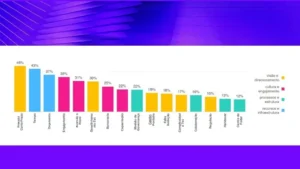
Innovation Trends for 2025
- Paulo de castro reis
What the most innovative companies are doing differently
In recent years, companies have explored various ways to innovate. But in 2025, they are leaving behind excessive complexity and focusing on more practical, business-aligned solutions.
The study The Future of Innovation Management 2025, by Inventta, highlights the key trends behind this shift in direction.
Pursuit of simplicity and clarity
Too many frameworks and methodologies have become barriers for many organizations. Instead of complicated processes, the focus is now on agility and clarity. Successful organizations are simplifying innovation, making it an organic part of their strategy, not a complex set of procedures.
Execution-oriented innovation
The current priority is getting things done. Faster innovations, shorter cycles, and tangible outcomes have proven to be more effective. The cycle of design → execution → measurement → repetition is now widely used to drive innovation dynamically, without being paralyzed by the search for the perfect solution.
Customization of innovation practices
Each company has a unique context, and off-the-shelf solutions are losing effectiveness. The trend is toward tailoring innovation practices to each organization’s needs and culture. Instead of following generic formulas, companies are building their own innovation models.
Diverse skills and hybrid teams
Multidisciplinary teams have become a competitive advantage. Innovation is no longer the responsibility of a single department; it now involves a range of skills and perspectives. This has led to more holistic and market-aligned solutions.
Innovation integrated with strategy
It’s no longer about having a separate innovation department. Innovation is increasingly seen as an extension of the business strategy, directly linked to goals for growth, efficiency, and competitiveness. The most advanced companies are fully integrating innovation into their core business.
The role of leadership and boards
Leadership is essential to foster and sustain a culture of innovation. When leaders and boards are actively engaged in the innovation process, the results are more sustainable. Innovation is no longer something “external” to the company, it’s a shared responsibility, especially for those at the decision-making level.
These trends show that innovation in 2025 is less about chasing the next revolutionary idea and more about delivering clear and impactful results. Companies that simplify, personalize, and integrate innovation into their strategy will be better prepared to face the challenges of an ever-changing market.
When innovation becomes part of daily practice, it turns into the force that drives companies into the future!






